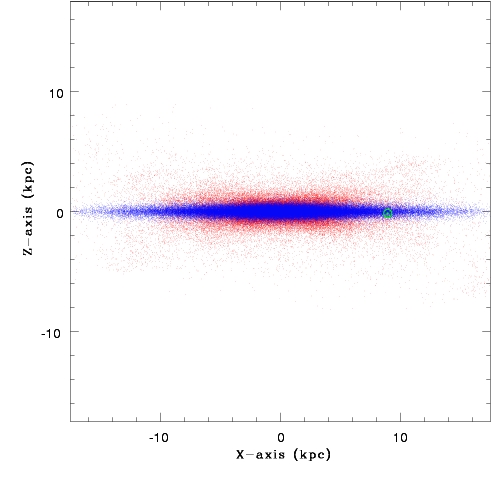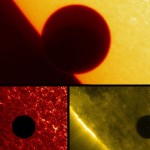
This image shows a side-on view of the simulated Milky Way. The thin disk is in blue and the thick disk in red. The green circle shows the location of the Solar System/Earth within the thin disk. Credit: Dr Kenji Bekki, ICRAR.
The Milky Way might have swallowed a galaxy as part of its formation.
A team of international space scientist worked together to simulate a merger between a galaxy and an infant Milky Way. The event, which happened some nine billion years ago, has been a source of dispute among researchers worldwide, but this study provides the best venue yet to determine whether or nor the merger actually occurred.
As quoted on the press release: “The Milky Way is shaped like two fried eggs placed back to back, where the yolks are a puffy collection of older stars called the bulge. The whites are a bright collection of younger stars known as the thin disk. The thick disk is a puffed up version of the thin disk, but is ten times lighter.”
Dr Kenji Bekki, of the International Centre for Radio Astronomy Research in Perth suggests that these results might change the way in which we perceive our Galaxy.
The paper “Origin of chemical and dynamical properties of the Galactic thick disk” was published in Astrophysical Journal.
Source: The University of Western Australia






